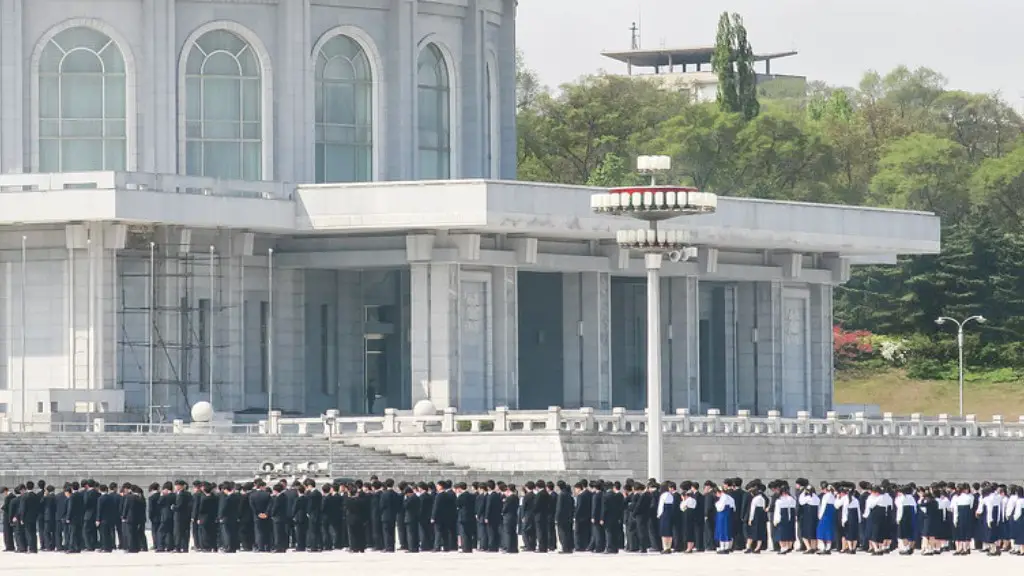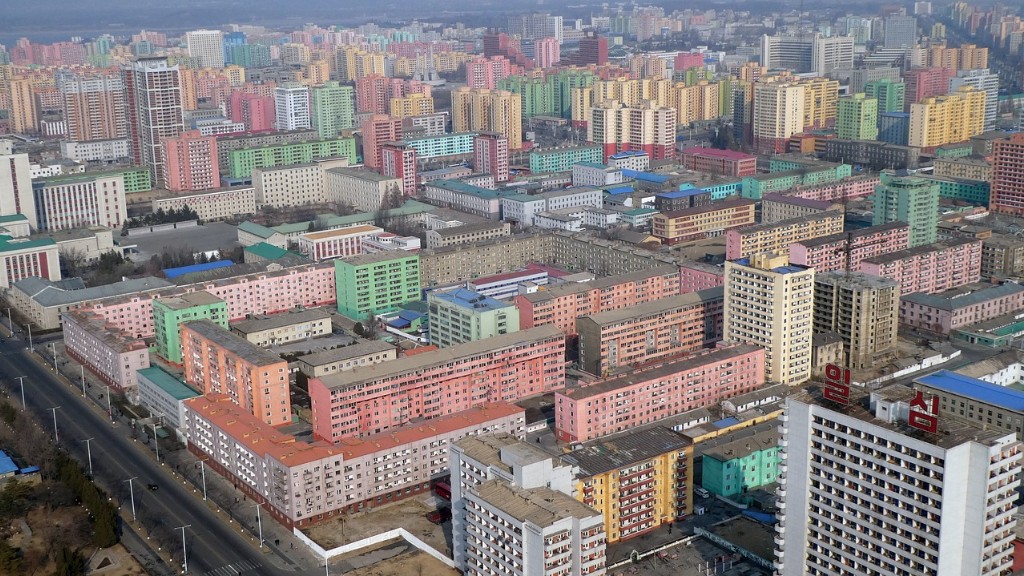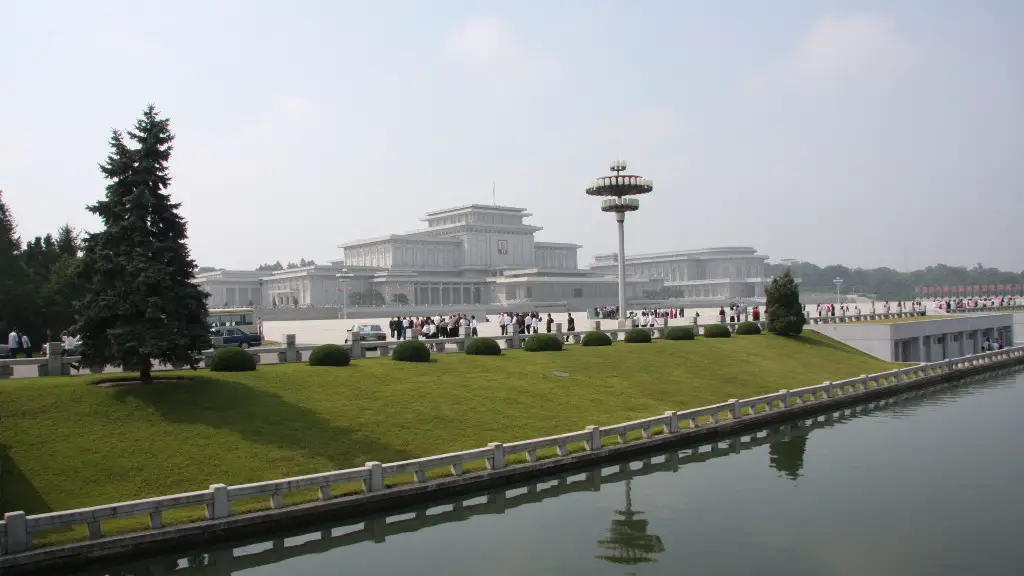The History of North Korea’s Nuclear Efforts
North Korean nuclear efforts date back to the 1950s, when the North Korean government began to develop a nuclear program. North Korea’s first nuclear test was conducted in 2006, and since then, numerous other nuclear tests have occured. North Korea has continued to demonstrate its intention to pursue a nuclear capability, despite receiving condemnation from the international community.
The United Nations Security Council has responded by enforcing a series of sanctions on North Korea. These have ranged from banning the export of luxury commodities, to prohibiting oil imports. However, these measures have not deterred nor slowed down North Korea’s nuclear program.
The purpose of North Korea’s nuclear tests are unclear. According to the country’s leader, Kim Jong-un, they are used to “protect the nation’s sovereignty and strengthen its military and defensive capabilities.” However, others argue that by testing nuclear weapons, North Korea is simply trying to increase its international influence, and to demonstrate its control power.
Regardless of the true objective of North Korea’s nuclear tests, they pose a major risk to global security. North Korea has conducted tests in close proximity to other countries, such as Japan, South Korea, and China, and the threat of these tests has caused tensions to increase in the region.
Experts have warned that these tests could have a catastrophic impact on the global environment and heavily damage international relations. For example, many believe that such tests could lead to the spread of radioactive material, as well as potential nuclear fallout.
Where Does North Korea Test Nuclear Weapons?
North Korea has conducted six nuclear tests since 2006, and the location of the tests has varied. There are two nuclear test sites in North Korea, known as the Punggye-ri site and the Tonghae Missile Facility.
The Punggye-ri site is located in northeastern North Korea and was established in 2006. This site, which is controlled by the North Korean military, is the most likely destination for North Korean nuclear tests. The site is located deep below ground, in an isolated mountain, which makes it difficult to locate and monitor. This has enabled North Korea to conduct its tests with relative ease, and minimal detection from international authorities.
The Tonghae Missile Facility, also located in northeastern North Korea, has also been used to conduct tests. This site is a launch and storage facility, and has been used to test intercontinental ballistic missiles (ICBMs). The facility is located on the country’s east coast, and is in close proximity to the Chinese and Russian borders.
North Korea has traditionally used the Punggye-ri site to conduct its nuclear tests, but it is believed that recent tests have been conducted at the Tonghae site. This has led some to speculate that North Korea is trying to conceal its nuclear weapons and develop an ICBM-based nuclear arsenal.
The Impact of North Korea’s Nuclear Tests
The impact of North Korea’s nuclear tests have been considerable. As a result of these tests, tensions have risen in the region, and the threat of nuclear war has increasingly become a possibility. North Korea’s actions have also been condemned by the international community and prompted the United Nations Security Council to impose harsh sanctions on the country.
Furthermore, North Korea’s nuclear tests have caused significant environmental damage. For example, in September 2017, the United Nations concluded that North Korea’s nuclear tests had created an artificial earthquake, and that the resulting seismic activity had caused widespread destruction. In July 2017, the United Nations reported that the nuclear tests had also caused land and sea to become contaminated with radioactive material.
The environmental impact of North Korea’s nuclear tests are concerning, and the risk of nuclear war is even more worrying. As tensions in the region continue to increase, it is important that the international community takes action to ensure that North Korea does not continue to pursue a nuclear capability. If the situation is not addressed soon, the consequences could be catastrophic.
What Could Stop North Korea’s Nuclear Tests?
In order to deter North Korea from conducting further nuclear tests, there needs to be collaboration between the international community. The United Nations Security Council has already imposed sanctions on North Korea, however it is clear that these measures are not enough.
In order to truly prevent North Korea’s nuclear efforts, it is essential that there is an international consensus on the issue. Nations must agree on a series of measures that aim to apply pressure on the North Korean government and demonstrate that its actions will not be tolerated.
Ultimately, it is down to the international community to ensure that North Korea is held accountable for its actions. In doing so, it is possible to limit the risk posed by the country’s nuclear tests, and ensure that a nuclear conflict is avoided in the future.
What Does The Future Hold?
It is uncertain what the future holds for North Korea’s nuclear program. It is highly likely that the country will continue its nuclear efforts, despite the condemnation from the international community.
However, if the international community can come together and agree on a set of measures to deter North Korea from its nuclear ambitions, then it is possible to limit the risk posed by the country’s nuclear tests. Ultimately, it is down to the international community to take action, and ensure that North Korea does not succeed in its nuclear objectives.
The Role of the United States
The United States plays a crucial role in the response to North Korea’s nuclear ambitions. The US has been at the forefront of the debate, and has consistently taken a hard-line stance towards North Korea. As such, it is essential that the US takes part in any negotiations or discussions between the international community.
The US has come up with a number of strategies in response to North Korea’s nuclear threat. Most recently, the US imposed a series of economic sanctions on the country, which have aimed to limit its access to resources, such as oil and luxury goods. Additionally, the US has sought to increase military pressure on North Korea, and has called on China and other nations in the region to support its efforts.
The US is in a strong position to influence the response to North Korea’s nuclear program, and it is important that the country continues to prioritise efforts to address the issue.
The Future of North Korea’s Nuclear Program
The future of North Korea’s nuclear program is uncertain. The country has continued to demonstrate its intentions to pursue nuclear capability, despite condemnation from the international community.
In order to halt North Korea’s ambitions and ensure that the country is held accountable for its actions, it is essential that the international community is able to come together and agree on a set of measures to deter the North Korean government from further nuclear tests.
Ultimately, it is down to the international community to take action, and ensure that North Korea does not succeed in its nuclear objectives. If the situation is not addressed, the consequences could be catastrophic.




